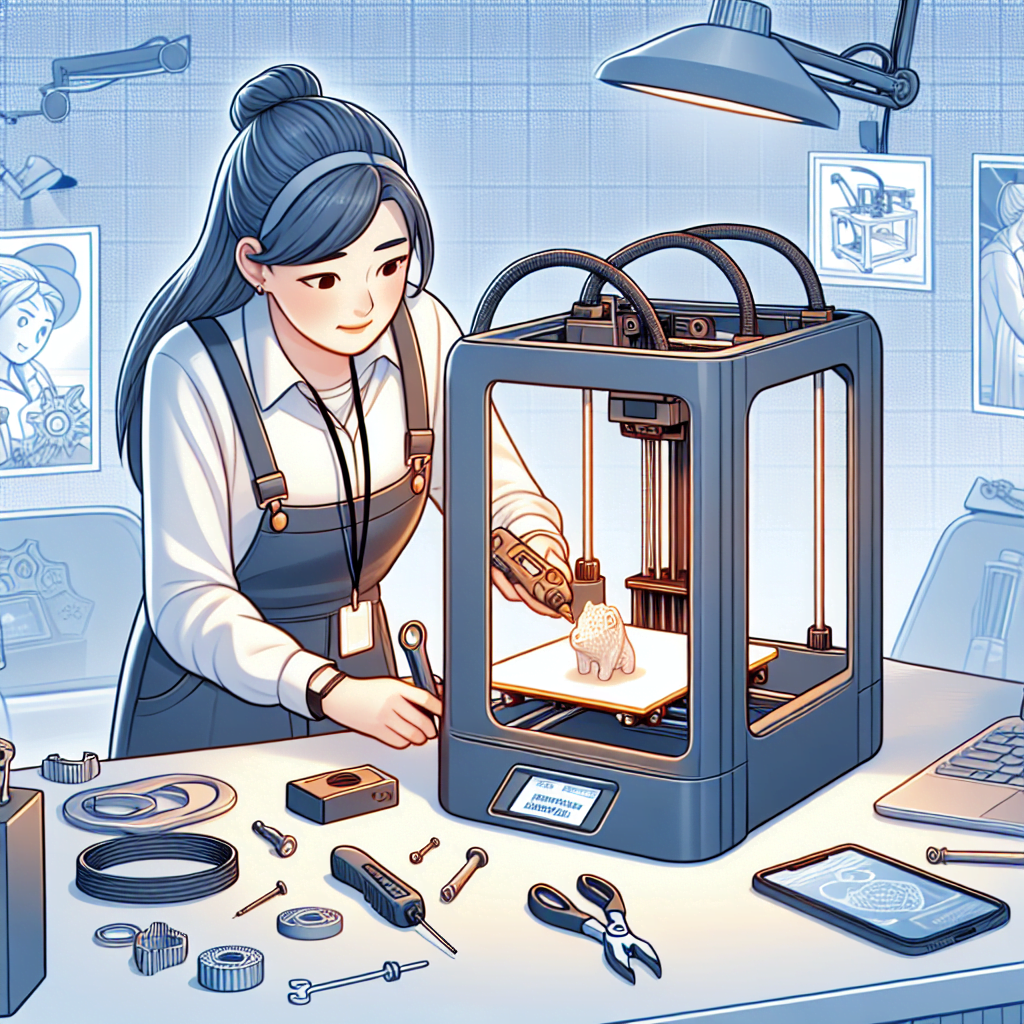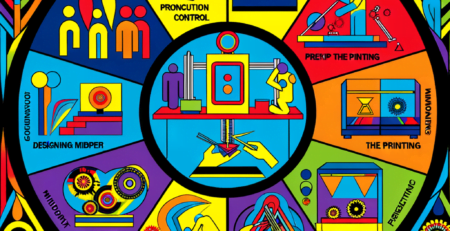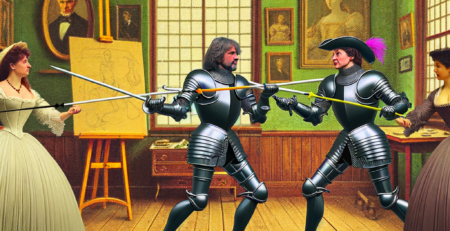Troubleshooting Common 3D Printing Issues Like Stringing and Warping
Sommario
“Perfect Your Print: Banish Stringing and Warping Woes”
Troubleshooting common 3D printing issues such as stringing and warping is an essential skill for anyone involved in the field of additive manufacturing. Stringing, also known as oozing or webbing, occurs when small strings of plastic are left behind on a 3D printed model, often between gaps or moving parts. This is typically due to excess material oozing out of the nozzle while the extruder moves to a new location. Warping, on the other hand, happens when parts of the print lift off the build platform during the printing process, leading to a deformed object that does not match the intended design. Both stringing and warping can be caused by a variety of factors, including incorrect temperature settings, improper cooling, or issues with the printing speed or material. Addressing these issues involves a combination of hardware calibration, software adjustments, and material handling to ensure high-quality prints.
Top Solutions for Eliminating Stringing in 3D Printing
Troubleshooting Common 3D Printing Issues Like Stringing and Warping
In the realm of 3D printing, achieving a flawless print is akin to reaching the pinnacle of craftsmanship. However, even the most seasoned professionals encounter common issues such as stringing and warping, which can significantly detract from the quality of the final product. Stringing, also known as oozing or webbing, occurs when small strings of plastic are left behind by a moving nozzle, resulting in a web-like structure between the parts of the print. Warping, on the other hand, is the distortion of a part away from the intended shape, often caused by uneven cooling. Both issues can be frustrating, but with the right knowledge and techniques, they can be effectively mitigated or even eliminated.
To address stringing, one must first understand its root causes. Stringing typically happens when the printer extrudes excess material as it moves between sections of the print. This can be due to a number of factors, including temperature settings, print speed, and retraction settings. The temperature of the nozzle plays a pivotal role; if it’s too high, the filament becomes too fluid and is more likely to ooze. Therefore, finding the optimal printing temperature for the specific material being used is crucial. It is often beneficial to start with the manufacturer’s recommended settings and then make small adjustments as needed.
Moreover, retraction settings are paramount in combating stringing. Retraction works by pulling the filament back into the nozzle when it’s not actively extruding. This prevents the molten plastic from dripping out as the nozzle moves. Fine-tuning the retraction distance and speed can significantly reduce stringing. A longer retraction distance may be necessary for flexible filaments, while a shorter one may suffice for stiffer materials. However, excessive retraction can lead to other issues like clogging, so a balance must be struck.
Print speed also influences the occurrence of stringing. Printing too fast can exacerbate the issue as the printer may not have sufficient time to properly control the flow of the filament. Slowing down the print speed can allow for more precise extrusion and retraction, thus reducing the likelihood of stringing. Additionally, using a travel speed that is fast enough to minimize the time spent moving between points can help in reducing the chances of oozing.
Transitioning from stringing to warping, it’s important to recognize that warping is often a consequence of the material cooling down too quickly and unevenly. This rapid cooling causes the layers of the print to contract at different rates, leading to a warped bottom layer that lifts off the build plate. To prevent warping, ensuring a consistent and controlled temperature environment is essential. This can be achieved by using a heated bed, which keeps the first layers of the print warm, reducing the temperature gradient and allowing for more uniform cooling.
Another effective strategy is to improve bed adhesion. A print that sticks well to the build plate is less likely to warp. This can be accomplished by using adhesives such as glue sticks, hairspray, or specialized 3D printing adhesives. Additionally, using a brim or raft can increase the surface area of the first layer, providing more adhesion and helping to anchor the print to the bed.
In conclusion, while stringing and warping are common challenges in 3D printing, they are not insurmountable. By carefully adjusting temperature, retraction, and print speed settings, one can significantly reduce stringing. Similarly, warping can be mitigated by maintaining a consistent temperature and improving bed adhesion. Through diligent experimentation and fine-tuning, enthusiasts and professionals alike can achieve clean, precise, and reliable 3D prints.
How to Prevent Warping: A Guide to Achieving Flawless 3D Prints

Troubleshooting Common 3D Printing Issues Like Stringing and Warping
The advent of 3D printing has revolutionized the way we create and manufacture objects, offering unparalleled flexibility and customization. However, as with any technology, users often encounter challenges that can affect the quality of their prints. Two of the most common issues faced by 3D printing enthusiasts are stringing and warping. These problems can significantly detract from the aesthetics and functionality of printed items, but with a proper understanding and the right techniques, they can be prevented, ensuring flawless 3D prints.
Warping occurs when different parts of a print cool at different rates, causing the plastic to contract unevenly and leading to a distortion that lifts the corners of the print away from the build plate. This issue is particularly prevalent when printing with materials that have a high thermal contraction rate, such as ABS. To prevent warping, it is essential to ensure a consistent temperature throughout the printing process. This can be achieved by using a heated build plate, which keeps the first layers of the print warm, reducing the temperature gradient as the print cools.
Moreover, the ambient temperature of the printing environment should be controlled. Enclosing the printer can help maintain a stable temperature and protect the print from drafts that could accelerate cooling in certain areas. Adhesion to the build plate is also critical in preventing warping. Applying an adhesive substance such as glue stick, hairspray, or a dedicated 3D printing adhesive can help the first layer stick to the plate more effectively. Additionally, using a brim or raft, which are additional layers that surround the base of the print, can increase the surface area of the first layer, improving adhesion and reducing the likelihood of warping.
Another common issue is stringing, where thin strands of plastic are left between parts of the print, resembling spider webs. Stringing is often caused by excess material oozing out of the nozzle while the print head moves between sections. To combat this, retraction settings can be fine-tuned. Retraction pulls the filament back into the nozzle when the print head moves, preventing any oozing. Finding the right retraction speed and distance is crucial, as too little retraction will not prevent stringing, while too much can cause other issues like clogging.
Print temperature plays a significant role in stringing. If the nozzle temperature is too high, the filament becomes too fluid and is more likely to ooze. Therefore, it is advisable to find the lowest possible temperature that still allows for smooth extrusion of the filament. Additionally, increasing the travel speed of the print head can reduce the time available for the filament to ooze, thus minimizing stringing.
In conclusion, while 3D printing offers a world of possibilities, it also presents challenges such as warping and stringing that can mar the quality of prints. By ensuring a consistent temperature with a heated build plate and an enclosed printing environment, applying adhesives for better bed adhesion, and optimizing retraction settings and print temperatures, users can significantly reduce the occurrence of these issues. With these measures in place, achieving flawless 3D prints becomes a more attainable goal, allowing both novices and experienced users to enjoy the full potential of 3D printing technology.
Mastering 3D Print Adhesion: Tips for Overcoming Common First-Layer Issues
Troubleshooting Common 3D Printing Issues Like Stringing and Warping
Mastering the art of 3D printing is akin to conducting a symphony; every element must be in perfect harmony to create a flawless final product. However, even the most skilled maestros can encounter the occasional sour note. In the realm of 3D printing, issues such as stringing and warping can disrupt the melody of creation, leading to frustration and wasted materials. To ensure a smooth performance, it is essential to understand the root causes of these problems and implement strategies to overcome them, particularly when it comes to the critical first layer of a print.
Stringing, also known as oozing or webbing, occurs when small strings of plastic are left behind as the printer head moves from one location to another. This issue is often a result of improper temperature settings or retraction settings. The temperature of the nozzle can be a delicate balance; too hot, and the filament becomes too fluid, leading to stringing. Conversely, if the temperature is too low, the filament may not extrude properly. To mitigate this, one must fine-tune the printer’s temperature settings for the specific type of filament being used. Additionally, adjusting the retraction settings, which control how much filament is pulled back when the nozzle moves, can help reduce the likelihood of stringing. A higher retraction speed and distance can prevent excess material from oozing out during travel moves.
Warping, on the other hand, is a distortion that occurs when different parts of the print cool at different rates, causing the material to contract unevenly. This is particularly problematic for the first layer, as it can lead to the print lifting off the build plate and potentially ruining the entire print. To combat warping, it is crucial to ensure that the first layer adheres well to the build plate. This can be achieved by using a heated bed, which keeps the bottom layer at a consistent temperature, reducing the risk of warping. The use of adhesives such as glue sticks, hairspray, or specialized 3D printing adhesives can also enhance adhesion. Moreover, leveling the build plate is of paramount importance; an uneven build plate can cause parts of the first layer to be too far from the nozzle, resulting in poor adhesion and increased chances of warping.
Another factor that can influence first-layer issues is the print speed. A slower print speed for the first layer allows for better adhesion as the material has more time to bond with the build plate. It is also advisable to adjust the nozzle height correctly; too high, and the filament will not stick properly, too low, and it may scrape against the build plate, both of which can lead to warping.
In addition to these mechanical adjustments, environmental factors can also play a role in first-layer adhesion. Drafts or sudden changes in room temperature can affect the cooling rate of the printed material. Therefore, controlling the printing environment, such as using an enclosure, can help maintain a consistent temperature and reduce warping.
In conclusion, mastering 3D print adhesion and overcoming common first-layer issues like stringing and warping requires a combination of precise calibration, appropriate settings, and controlled environmental conditions. By meticulously adjusting temperature and retraction settings, ensuring a level build plate with proper adhesion, moderating print speed, and maintaining a stable environment, one can significantly reduce the occurrence of these common 3D printing issues. With patience and attention to detail, achieving a harmonious and defect-free 3D print becomes not just a possibility, but a standard expectation.
Conclusione
Conclusione:
In troubleshooting common 3D printing issues such as stringing and warping, it is essential to understand the underlying causes and implement appropriate solutions. Stringing, caused by excess filament oozing from the nozzle, can be mitigated by fine-tuning retraction settings, increasing travel speed, and ensuring proper printing temperature. Warping, which occurs when the print’s base lifts from the build platform, can be addressed by improving bed adhesion through the use of adhesives, heated beds, or rafts, as well as by controlling the printing environment to minimize temperature fluctuations. By systematically adjusting printer settings and maintaining a stable printing environment, one can significantly reduce the occurrence of these issues and enhance the quality of 3D printed objects.





Lascia un commento